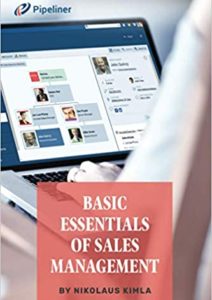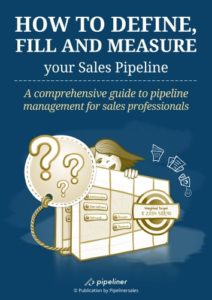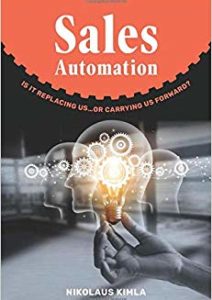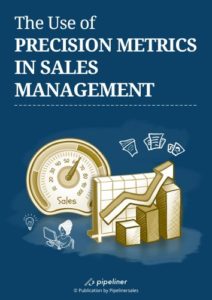One route into the position of a sales manager is promotion from having been a highly successful salesperson. They are suddenly saddled with the responsibility of the entire sales team. It is a tough position to be in—kind of like a newly elected politician in their first 90 days. All eyes are on this individual to see if they deliver. In the case of the sales manager, those eyes are looking from both above and below: the company executives from above and the sales reps from below. The fact of the matter is, having been a high-performing sales rep doesn’t mean that they’ll automatically be a great manager. Fortunately, though, sales management is a craft that can be learned.
When a sales manager newly comes into a company and is faced with an existing sales team, he or she will be confronted with a number of challenges. This is a list of them, and roughly the order in which the new sales manager should handle them. This will help a sales manager to get up and running.
Note: We are assuming here that this sales manager is not inheriting a drastic situation, in which sales are doing terrible and the team is extremely lackluster. That would be a different situation. We’re assuming that the sales team and the company are at least somewhat successful, and the sales team is capable.
We’re also, just for the sake of this article, going to assume our sales manager is named Lisa, and that she is female.
Making That Quota
Analysis
So Lisa has come into her new position as sales manager. The first concern she is going to have is making the quota that has been set for her, and her sales team. She is going to have to know how to figure out if that quota can be met, and how it can be met. To do this, she’s going to have to analyze the whole situation with the sales team, which will include the sales processes and their efficiency (more on the sales process in a bit).
Closing Ratios
Once she has done an analysis, Lisa will require the closing ratios for each one of her sales reps. Hopefully, these have already been figured out and are known—but if not, she is going to have to roll up her sleeves and get busy and figure them out.
Once they are figured out, then they need to be summed up into the closing ratio for the whole sales team.
Number of Opportunities
These closing ratios will be used to then figure out the next raw figure Lisa will need: the number of opportunities she will need in the pipeline, and their value.
If the new business quota for a quarter is $2 million, and the sales team closing ratio is 25%, then they will need $8 million in potential opportunities in the pipeline in order to make that quota. For simplicity’s sake, let’s say that the average opportunity is $25,000. That would mean there would need to be 320 opportunities in the pipeline.
There is also existing business, through which cross-selling and upselling opportunities can occur. This will also need to be taken into consideration.
It doesn’t stop there. Each rep’s quota will have to be individually figured out based on that rep’s closing ratio, too. Then these quotas hopefully collectively add up to the overall quota for the sales team.
Number of Leads
In order to get those opportunities into the pipeline (if they aren’t already there), our sales manager Lisa needs to work backward. She needs to discover the conversion ratio of leads to opportunities, for each individual rep, and for that sales team. That will ultimately show her the number of leads needed, in order to achieve the required number of opportunities.
For example, if the lead conversion ratio for the sales team was 1 in 10, then to achieve 320 opportunities in the pipeline, the sales team would need to run through 3,200 leads—960 leads per month.
Now the major question becomes: where do these leads come from? They certainly don’t all come from the main sales team, although there can be a certain percentage that might. But there will also be leads coming from inside sales reps (or Sales Development Reps, SDRs), and also from Marketing (more on this below).
Generally, outbound leads will come from SDRs and, in some cases, sales reps, and inbound leads come from Marketing. Leads can also come in from upselling and cross-selling existing customers, and this source must also be taken into account.
Other Factors
Other factors can influence these computations, and Lisa will have to include them if they apply. For example, if the deal size is considerably larger than normal, much of the time that will mean that the sales velocity—the time it takes from lead to a closed sale—will be longer. Deal size can also have an influence on the closing ratio. Or if a particular source of leads proves incredibly numerous, lead qualifying will have to be applied in earnest, because they’ll not want to start working a bunch of suddenly worthless leads.
A sales manager like Lisa will work all this out, because we know she’s smart, and she really wants to make a great first impression and meet or beat that first quota.
Marketing Support
While Lisa is getting the quota figured out, there is another aspect she should be checking on right away, and that is marketing support. As noted earlier, a healthy portion of the leads are inbound leads, which are generated by Marketing.
Additionally, sales reps need marketing collateral materials, customer case studies, competitor studies, price sheets, and many other materials in order to help close sales. These all come from Marketing as well. Without these kinds of materials, salespeople only have their verbal messages.
To make sure all of this is happening, Lisa needs to speak with the executive over Marketing to see how well Sales and Marketing are aligned. Marketing needs a consistent flow of information from Sales in order to figure out their strategies, and Sales need total support from Marketing. In our company, our CMO takes part in all sales meetings to make sure that both of these are occurring and our CMO dashboard is up to date.
At the very least, starting off, Lisa has to make sure that Marketing is there to back up her team.
Support from Support
While checking into Marketing, Lisa is also going to check into how Tech Support backs up sales.
As any salesperson will tell you, the last thing needed when making a sale is for the trial version, or the product or service, to have issues for your prospect. When Tech Support is needed in such an instance, it has to be fast and it has to be good. That’s the only way sales are consistently made.
But it isn’t just when the product is being sold—support has to be great all the way down the line. If something goes wrong, support has to be very good. If not, repeat business isn’t going to happen. And if it’s a subscription-based service (like SaaS), you’re going to lose renewals and get cancellations. So support begins with the trial, extends through the sales stages, and continues long after the customer has been sold and is now under the Customer Success Manager.
As a note, sales are divided into pre-sales or SDR sales, sales, and then afterward they come under the Customer Success Manager. When the sales team is constantly creating a new business they can’t take care of existing customers. That falls under the Customer Success Manager.
So that’s something else Lisa will need to see to: the support for the company’s products or services is great, and truly backs up sales.
In our industry (CRM), information from product support has a considerable bearing on development, for support is the front line reporting station for bugs, issues, and desired functionality. Lisa can help make sure that support data makes it to development, too.
The Pipeline
Now, while all this is going on, Lisa should also start paying strict attention to the structure of the sales pipeline itself. By this, we mean the sales process and all of its stages.
Is your sales process correct? While no sales pipeline is going to be perfect, you can certainly gauge the effectiveness of your sales process by the number of sales that make it through to a close. A sales process starts losing its efficiency when there are 1 or more stages where opportunities tend to stall, or which have become outmoded and salespeople tend to bypass that stage or stages.
A sales process is often evolved from actions taken by a company’s most successful reps—and this is the advice most often given in how to evolve a sales process. This will only work, however, if your reps are telling you everything—if, for some reason (like wanting to keep their “sales secrets” to themselves) they’re holding things back, the sales process won’t work as well for others as it did for them.
Another point is that you can have sales superstars that sell in a certain way, and other salespeople who are not as capable won’t be able to keep up. Hence not everyone will be able to follow this process.
So it might be worthwhile to lay out a sales process or sales pipeline based on actions of your proven reps—but be ready to try it out, monitor it carefully, and change it as needed. Which leads us to our next point.
Once Lisa has gotten the sales process up and running, and it is as correct as can be, she is still under pressure as regards what reps are doing within each step of the sales process. It could be said that the sales process is the horizontal process, whereas what takes place in each sales stage is a vertical process. The tasks and activities that make up each vertical process are every bit as important as the horizontal processes.
The sales process is another hefty subject, and we have created a lot of material on it. At the end of this article, we have listed links to several of them for further reading.
The Dynamic Sales Pipeline
Sales is a dynamic activity—it is constantly subject to change. The same is true of your business, of markets, and even of economies. It’s also true of your products and services, which also evolve. Changes can happen rapidly, as we know all-too-well from the recent pandemic, and such changes can have drastic implications for sales processes.
Your sales process mirrors your buyers’ patterns as closely as possible (or if it doesn’t, it should). Those patterns are going to change, too, over time.
All of this means that your sales process will have to have changed, too. Your sales pipeline needs to be as dynamic as the environment through which it flows. You must have and use a CRM solution that is just as dynamic, that can be instantly changed as needed, without “experts” or outside consultation. Most CRM systems are not that flexible—and Pipeliner specializes in it.
If you are responsible for multiple product lines, then you have multiple dynamic sales processes. And Pipeliner will keep up with that as well—allowing you to have as many processes as you need, all sharing a common database.
To learn more about the subject of sales processes, check out these further resources:
A Precise Sales Process: The Key to Successful Sales Management
The Pipeliner Selling System: A Practical Approach to a Sales Process
CRM Solutions: A Sales Funnel or a Pipeline?























































Comments